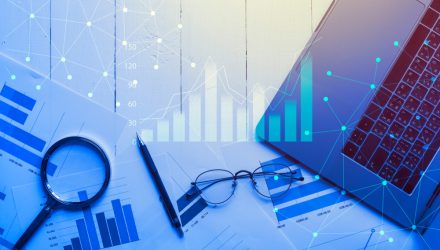By Elle Caruso and James Comtois
Brown Brothers Harriman today released the findings of its ninth annual global ETF investor survey, discerning investor sentiment and trends in the ETF marketplace.
The report captures responses from nearly 400 institutional investors, fund managers, and financial advisors from the United States, Europe, and Greater China. In total, 39% of respondents managed more than $1 billion in assets, up from 30% in 2021, according to the report.
After breaking records in 2021, ETFs are in for another big year in 2022. 84% of global ETF investors — and 88% of U.S. ETF investors — plan to increase their ETF allocations, a 12% increase from BBH’s 2021 findings, according to the report.
In the U.S., the most important considerations when selecting ETFs include the fund issuer, expense ratio, and trading volume. In both Europe and Greater China, trading volume takes top spot, and the ETF issuer takes the second place, according to the report.
Two significant changes from the last survey include an increase in demand for defined outcome ETF product development, with the U.S. leading the well, as well as investors looking for larger ETFs to allocate their funds. The survey saw an increase in investors stating they need a fund to have at least $250 million in assets under management.
Trends in the Thematic Space
Most global ETF investors surveyed plan to increase exposure to thematic ETFs, with internet and technology thematic funds looking the most appealing, according to the survey.
The survey found that 85% of global ETF investors plan to increase exposure to thematic ETFs. Over the next five years, 38% of respondents plan to allocate 11% to 20% of their portfolios to thematic ETFs, led by U.S. and Greater China respondents.
ETF Trends’ Dave Nadig explained that the current “unsettled” global markets are what’s driving the popularity of thematic ETFs.
“In this kind of environment, investors really want to know what they own, and they start paying more attention to why they own it,” said Nadig. “ETF transparency makes both of these quite simple, as they broadcast their holdings, generally daily.”
Nadig added: “When the survey was done, tech and thematic products were ‘what was working,’ and pre-Ukrainian crisis, it was easy to see why. I suspect if the same survey was run today, you’d find investors interested in real assets, commodities, inflation protection, energy, and the like.”
Internet and technology themes continue to generate investor interest, with 64% of global investors planning to add internet/technology ETFs to their portfolios in 2022. ESG-themed funds ranked second among investors at 56%, followed by digital assets/cryptocurrency funds at 54%.
“ETFs are great vehicles for narrow exposures,” Nadig said. “While in general I’m cautious of suggesting the average investor should be in a narrow theme, for global-macro and event driven investors, the ability to quickly put on or take off exposure to, say, Chinese internet names, or global vaccine development, make them attractive. In these cases, thematic ETFs are more likely replacing single stocks than mutual funds in investor portfolios, particularly at the hedge fund and institutional level.”
Interest in Active ETFs Shows No Sign of Abating
Active ETFs represented about 10% of global net inflows in 2021, driven mainly by U.S. investors. The survey shows a pronounced uptick in investors’ planned allocation to active ETFs globally, with 78% of respondents planning to increase their exposure to active ETFs this year (up from 65% in 2021).
This year’s findings regarding the usage of active strategies highlight how portfolio construction is evolving. Defined outcome ETFs topped our respondents’ list when they were asked in which categories they want to see more active strategies. This suggests that investors are looking for low-cost, liquid hedging tools in their portfolios in 2022.
Global equity also ranked highly, highlighting that specialization in foreign markets could be a differentiator for active ETF managers.
In a survey question aimed only at U.S. respondents, 50% of respondents said that they will “definitely” buy a semi-transparent active ETF in the next 12 months, trailed by “possibly” at 36%. Only 14% of respondents are not planning on buying a semi-transparent active ETF or are not aware of the structure.
ESG Remains a Priority Among Global Investors
Despite citing lack of consistent methodology as a headwind to ESG adoption, 89% of investors plan to add ESG investments to their portfolios. In Europe, almost half of respondents weight their allocation towards funds that promote “environmental and social and good governance characteristics.”
U.S. Investors Are Driving Demand for Defined Outcome ETF Product Development
The survey also revealed a large jump in fixed income ETF interest from U.S. investors year-over-year. Nearly all U.S. investors (86%) plan to increase fixed income ETF allocations over the next 12 months, up significantly from 67% in 2021.
“For years, many investors and advisors who used ETFs used them exclusively for equities or alternatives like Gold, relying on existing relationships with active bond mutual fund managers,” said Nadig. “Many of those managers are now running similar strategies in the more tax efficient and liquid ETF wrapper, so the switch makes a ton of sense even if you don’t believe there’s a rotation to safety going on.”
Added Nadig: “Fixed income is a super challenging asset class right now because of inflation and interest rates, but regardless, bonds will remain a core for a lot of portfolios going forward, and ETFs will just make sense as the target vehicles.”
For more news, information, and strategy, visit ETF Trends.
